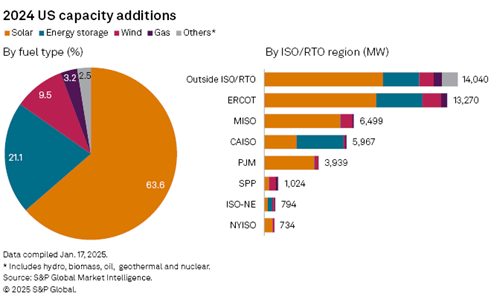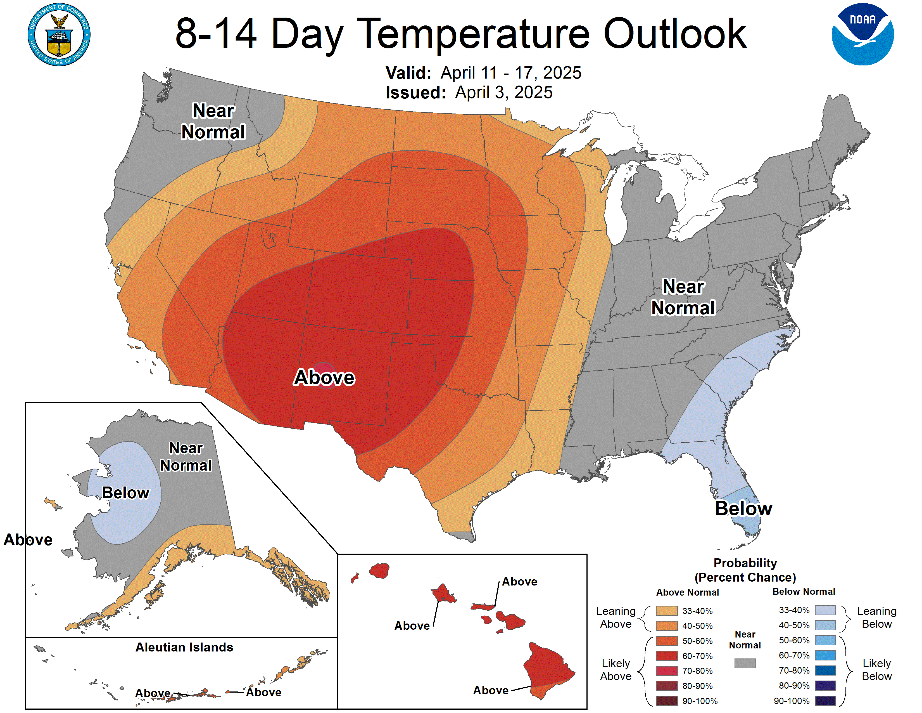Mild weather across the majority of the U.S. for the month of March was able to stop the rapid depletion of U.S. storage levels. We saw the same thing across the pond in Europe with storage levels now sitting 200BCF above where they were in 2022. A flurry of tariffs went into effect on April 2nd causing some market concern, and having some regional impact on pricing but as it stands today US energy markets remain largely unaffected.
With a mild March, the overall market sentiment is a bit less bullish than it was heading into March, however there is still a lot of uncertainty and risk in the back half of 2025 and 2026.
Gas Outlook
- The year over year production of natural gas is up by 0.5BCF/D.
- After a few weeks of injections, natural gas levels are nearing the 5 year average.
- Natural Gas markets continue to be heavily backwardated – 2028 trading near 3 year lows.
- Permian pricing turns negative as takeaway capacity remains an issue in the region.
Power Outlook
- ERCOT is facing potential generation shortages starting in 2028 and 2029, as forecasted reserve margins are negative.
- Largest gas fired power plant begins construction in PA – could be operational by 2027 relieving regional capacity concerns.
- 6.5TW of generation remains tied up behind interconnection queues, we’re continuing to follow a key race between new generation and load growth.

Driving Prices Higher
Uncertainty surrounding tariff impacts has led to increased market speculation, contributing to higher prices. U.S. storage levels remain below the five-year average, while strong LNG exports continue to drive demand. At the same time, stagnant production further pressures the market, adding to the upward price trend.
Driving Prices Lower
Mild March weather has helped ease demand, contributing to lower prices. Additionally, increased forecasts for storage levels at the end of the injection season provide further downward pressure. Higher renewable energy output and strong performance have also led to low spot pricing across the country, reinforcing the trend of declining prices.

Preparing for Future Energy Market Uncertainty
While mild March weather has provided temporary relief, long-term risks in the energy market remain. Persistent backwardation in natural gas markets, Permian takeaway capacity issues, and ERCOT’s projected generation shortages all signal potential volatility ahead.
For businesses, staying ahead of market shifts is critical. Monitoring tariff impacts, evaluating energy procurement strategies, and leveraging renewable energy options can help mitigate price risks. Additionally, reviewing long-term contracts and considering hedging opportunities for 2027 and beyond may provide cost stability in an uncertain market.
Environ Market Analysts track and analyze millions of data points to help you reduce exposure to market swings, lower energy costs, and prepare for long-term price stability. For localized market analysis or information on scheduling an energy audit, email info@environenergy.com.


